- Analysis
- National
- Climate policy
This was published 1 year ago
How surging insurance bills could help us deal with climate change
By Liam Mannix
Examine, a free weekly newsletter covering science with a sceptical, evidence-based eye, is sent every Tuesday. You’re reading an excerpt – sign up to get the whole newsletter in your inbox.
A few years ago, before COVID-19 consumed my work, I wrote a lot on bushfires and about a puzzling characteristic of survivors.
Many rebuilt. So did flood survivors. Like they felt a proud duty to push back against tragedy – rather than listen to the signals from an increasingly chaotic natural world.
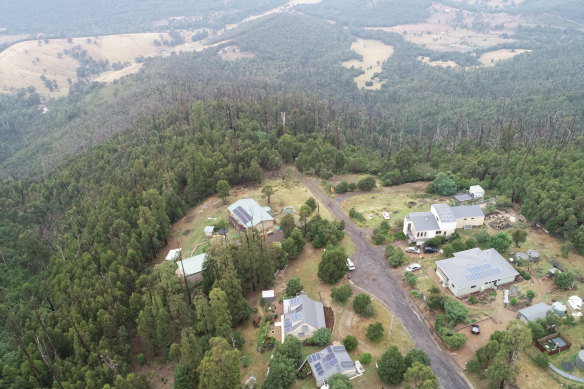
In 2020, a small huddle of houses had appeared just outside Kinglake, where the catastrophic Black Saturday bushfires wreaked havoc in 2009.Credit: Jason South
As Ross Bradstock told me this week: “We can’t let nature win.”
Bradstock was one of Australia’s foremost bushfire scientists before moving into semi-retirement. In early 2020, he gave me an interview – and his final comment stuck with me.
Bradstock asked: What if it’s not people, or governments, who end up driving our adaptation to the climate crisis? What if it’s insurance?
He was prescient. As climate risk has dramatically increased so too have insurance premiums. Globally, the average cost of weather-related losses grew tenfold between 1974 and 2018. In the US, The New York Times reports that the largest home insurer has almost stopped selling new policies in California because of bushfire losses.
In Australia, direct costs from extreme weather are expected to grow by more than 5 per cent per year to 2030. Just last year, extreme weather events cost insurers more than $7 billion, according to the Insurance Council of Australia.
“Insurance prices risk, and as risk from extreme weather worsens, so do challenges with the affordability and availability of insurance in vulnerable areas around Australia,” an Insurance Council spokeswoman said.
Rising insurance premiums – and some areas being declared uninsurable – are a price signal from a hotter, riskier planet.
“In a pure and simplistic, ideal world – a market-driven model – insurance would be one of the mechanisms that would force change,” says Bradstock. “But it’s not simple.”
Climate ghettos
Individuals can respond to increasing insurance bills in several ways. They can “retreat” – sell the house and move. They can adapt by fire or flood-proofing their homes, or working with local authorities to put defences around entire communities. Texas, for example, operates an insurance scheme that insures only those buildings built to a certain standard.
Or they can do nothing and live uninsured.
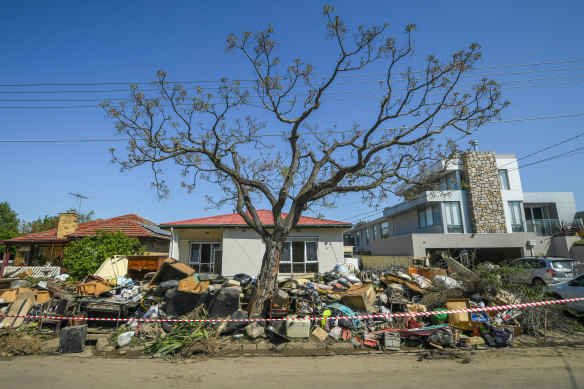
Debris collected during the clean-up after flooding in Maribyrnong last year.Credit: Justin McManus
As Bradstock says, in theory, the insurance price signal should push us to adapt to the climate crisis.
The problem is, price signals work only if individuals can respond to them.
If cheese gets more expensive, we buy a cheaper cheese. But if our house becomes uninsurable, many people cannot afford to move — a problem worsened by the decline in value of an uninsurable property.
Consider the 2011 flash floods in Queensland. House values fell immediately and dramatically in affected areas, while insurance premiums soared, leaving some unable to sell and leave. They were trapped in a place full of traumatic memories.
The Reserve Bank published work this year looking at homes likely to be hit by significant falls in property prices due to the climate crisis. The map is not pretty.
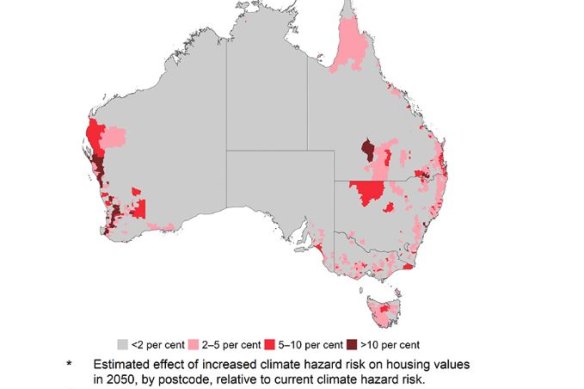
It’s not a pretty picture.Credit: Reserve Bank of Australia
If people living in affected areas can’t afford to move, they face being uninsured. This is bad. People with insurance tend to recover faster from natural disasters and return to their lives. If the insurance claim is rejected, however, they recover slowly or not at all.
Affordability also affects how well people can adapt to climate threats. One US study looking at homeowners given financial incentives to bolster their houses against bushfires found just 10 per cent did so; poorer homeowners couldn’t afford to retrofit even with the incentives.
“What it has meant, in America already, is you get ghettoisation,” says the University of Tasmania’s Dr Chloe Lucas, who has published multiple papers on the climate crisis and insurance.
“The most disadvantaged people end up in the riskiest places because they can’t afford to leave.”
Last year, I covered the flooding in Seymour for The Age. One of the worst hit places was the caravan park which sat right by the river – and was home to the community’s most vulnerable people. When their caravans flooded, they lost everything.
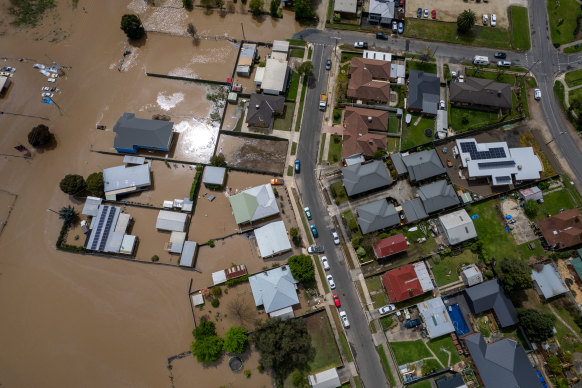
The centre of Seymour after flooding on October 14, 2022.Credit: Jason South
Government action
After a natural disaster, governments can implement buybacks. Victoria tried a buyback scheme after the 2009 bushfires, but collected little more than 100 properties. Queensland is now trying something similar for flooding.
But people hate these buybacks. It comes back to that urge to fight back against nature.
When in opposition last year, federal Labor called for the sacking of the coordinator-general of the National Recovery and Resilience Agency after he said flooded homes should not be rebuilt. A few months later, after Labor won the election, he was out of the job.
More popular have been attempts to bypass the price signal.
The former Coalition government established its own cyclone insurance scheme in 2022, effectively transferring the climate crisis risk from insurers onto taxpayers.
“If you lose that price signal in the market, you possibly introduce other risks,” says Natural Hazards Research Australia CEO Andrew Gissing.
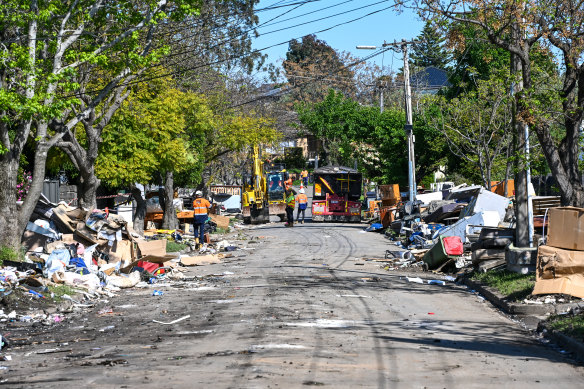
The clean up in Maribyrnong after last year’s flooding.Credit: Justin McManus
Indeed, in the absence of a price signal, homeowners will often use government dollars to rebuild a house that is no safer than the one that was destroyed.
The US tried this – subsidising flood insurance – with disastrous results. The wealthy were able to afford insurance and so built houses directly on a floodplain.
A third option, as opposed to government buybacks or subsidies, is to listen to price signals, and change behaviour.
The Insurance Council has been calling on governments to make extreme weather resilience a mandatory requirement for planning approvals. The government could, in turn, demand insurers offer lower premiums for houses that are designed to withstand fire and flood.
Insurance premiums in Roma, Queensland, fell up to 90 per cent after a flood levee was built.
That approach wouldn’t solve all problems. Governments need to find a way to subsidise the vulnerable so they can leave high-risk areas, while avoiding a mechanism that encourages the wealthy to build in high-risk areas.
But working with a price signal, instead of against it, seems to make a lot of sense.
Liam Mannix’s Examine newsletter explains and analyses science with a rigorous focus on the evidence. Sign up to get it each week.